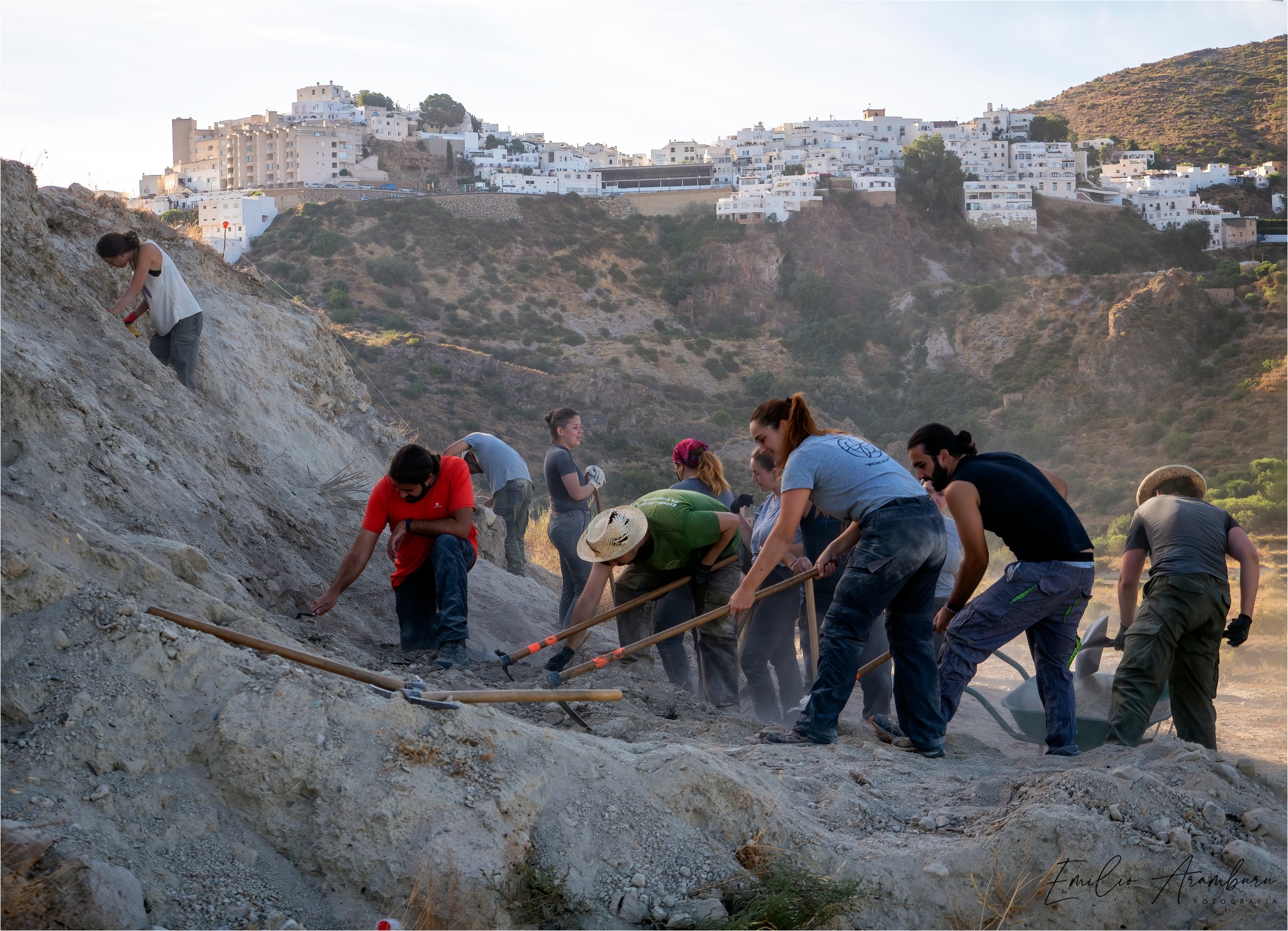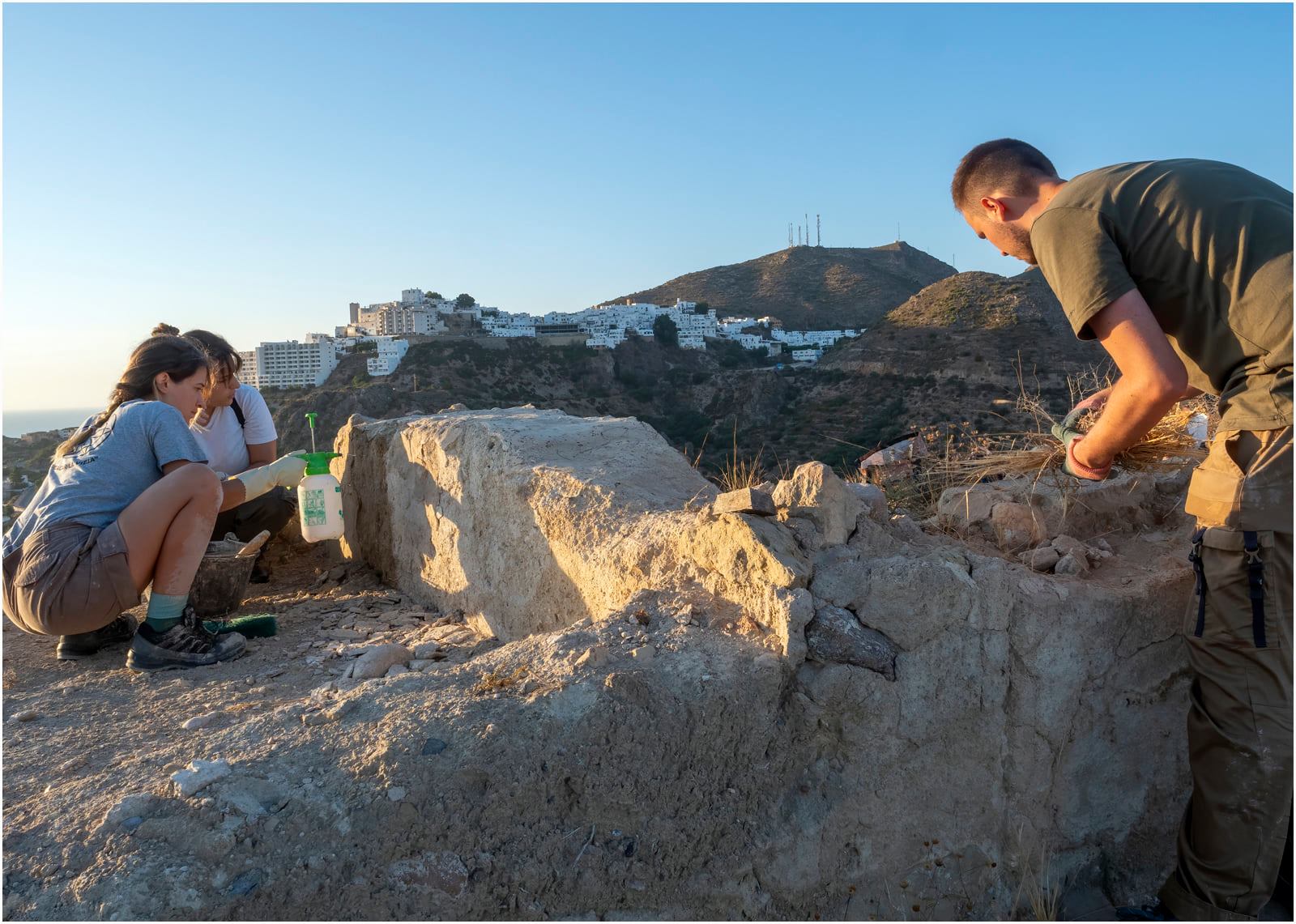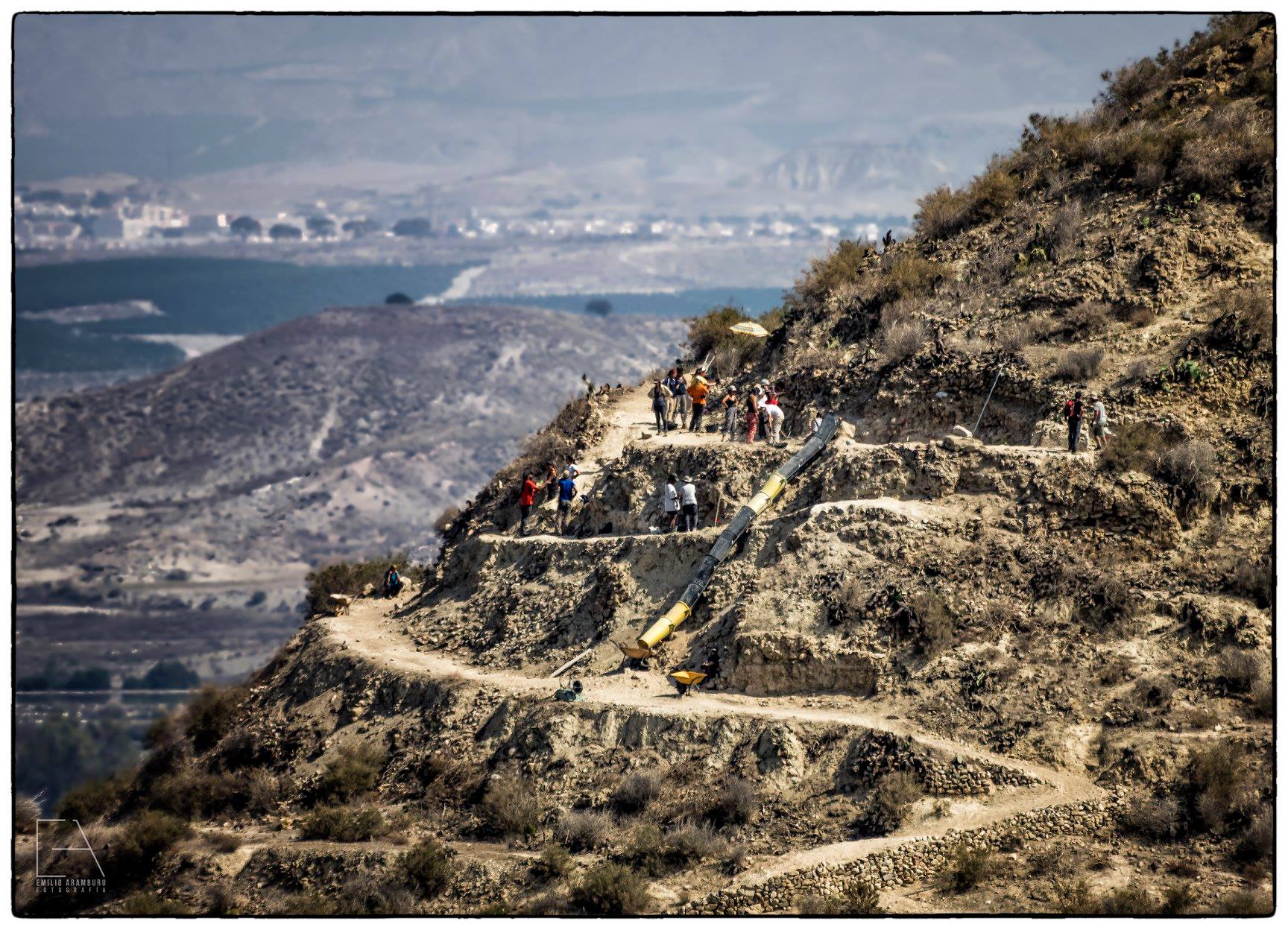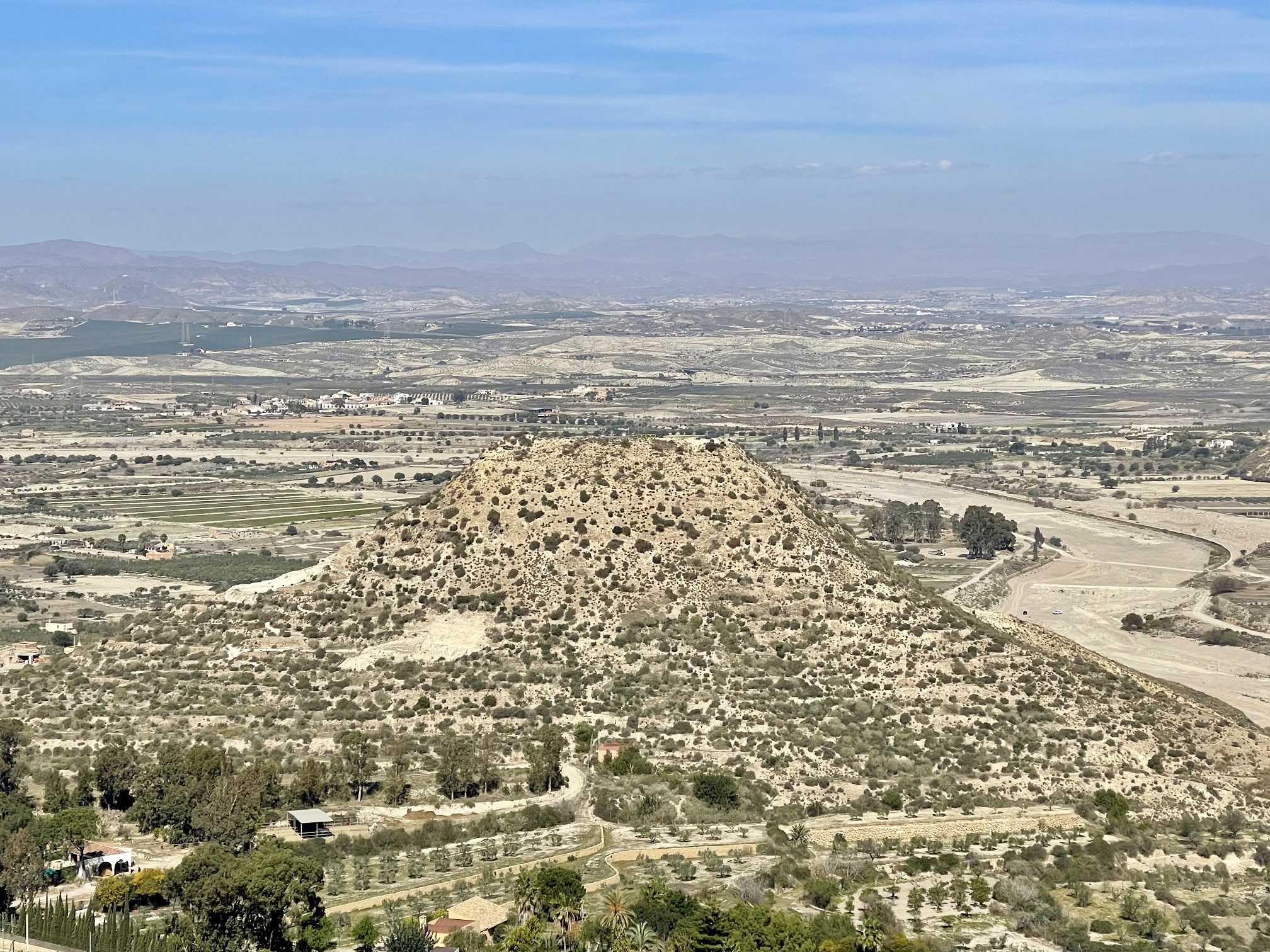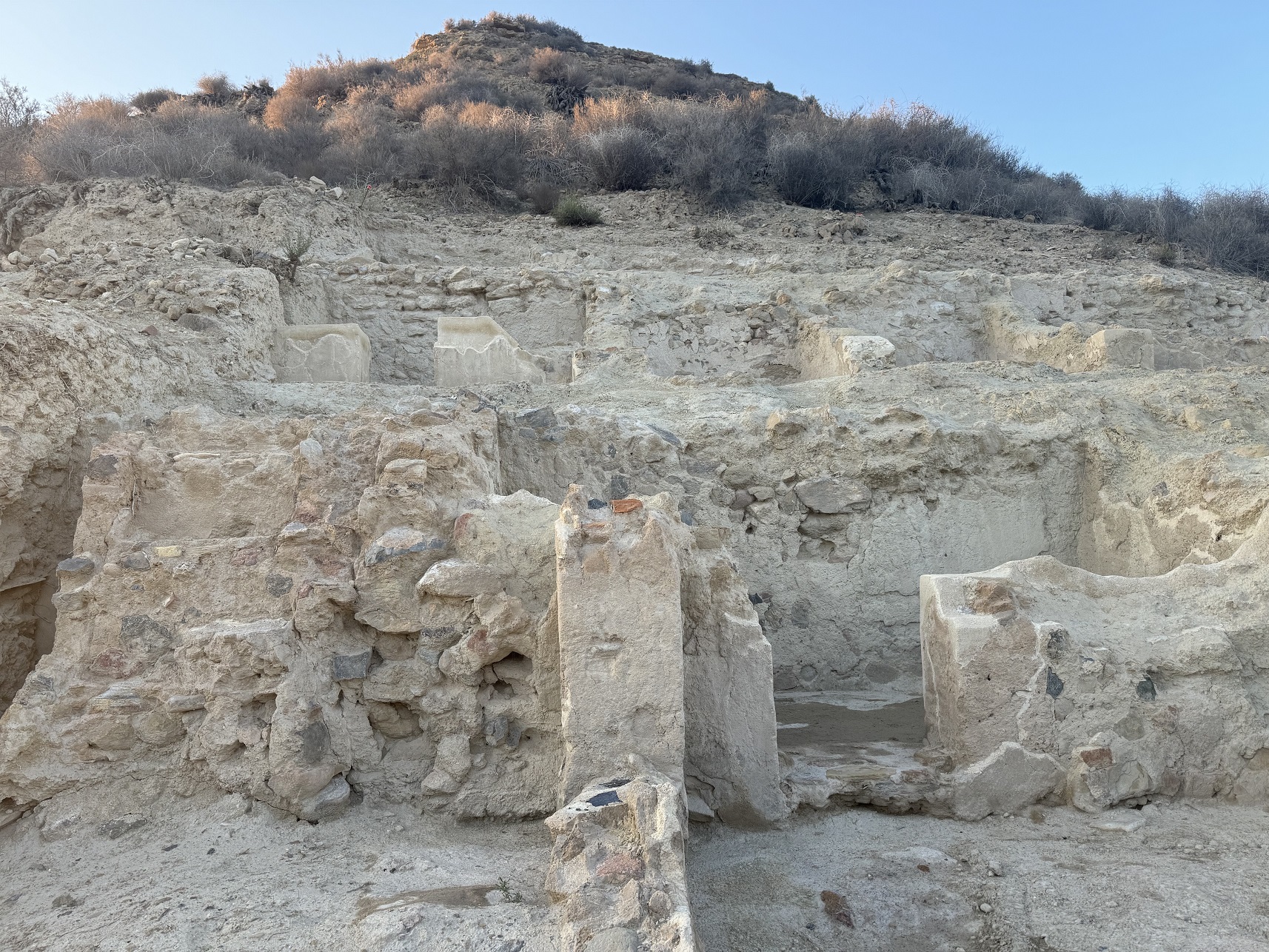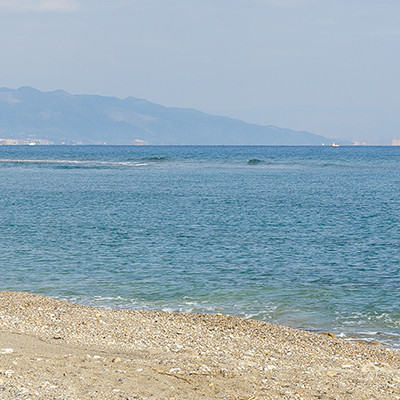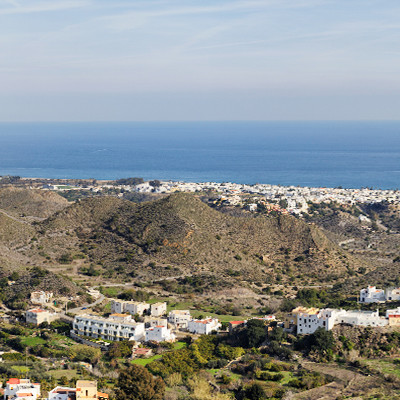Mojácar la Vieja Archaeological site
The Mojácar la Vieja site is located on a hill that dominates the plain of the Aguas River. This privileged geographical location favored occupation since prehistoric times, with a settlement from that era being documented at its base. However, the archaeological remains currently visible on the hill itself belong to the Andalusian period, when the hill was occupied by the first Islamic communities. The top of the hill is crowned by a large cistern, with the houses extending, in a staggered manner, along the south and southeast slope.
Likewise, both on the small plateau at the top and at a medium height on the slope, there are defensive constructions, among which it is easy to identify, sections of wall, towers, and even an access door from the walled enclosure. lower than the interior of the town.
Archaeological investigation of this settlement can allow us to obtain interesting urban, architectural and social data on the first Islamic communities settled in the east of Almería.
The settlement was organized in at least two parts: a large castle from the middle of the hillside upwards and the town where the majority of the population lived in the lowest part to the foot of the mountain. As far as we have been able to see, the suburb was not walled, but along the hill we can see numerous remains of walls, pavements, and collapses, which indicate that it was full of homes and other buildings dedicated to workshops, warehouses, shops and, at least a major mosque and maybe even an Arab bath (a hamman).
The castle, which had two enclosures: Halfway down the slope you can follow the layout of a powerful wall that completely surrounded the hill and of which we already have fifteen towers documented. One of them has a door inside with a curved access. To go up there was a ramp with steps that ran between two towers. Just upon entering through the door we find houses that are from the second phase of the site, most probably already from the 13th century. But where we have been able to delve deeper, up to more than two meters in some cases, we have discovered remains of other previous homes that were demolished to build new ones, raising the level of use. We have also found four silos for storing grain and a ceramic pipe (an athanor) that was used to collect rainwater and store it in jars and perhaps some other tank.

